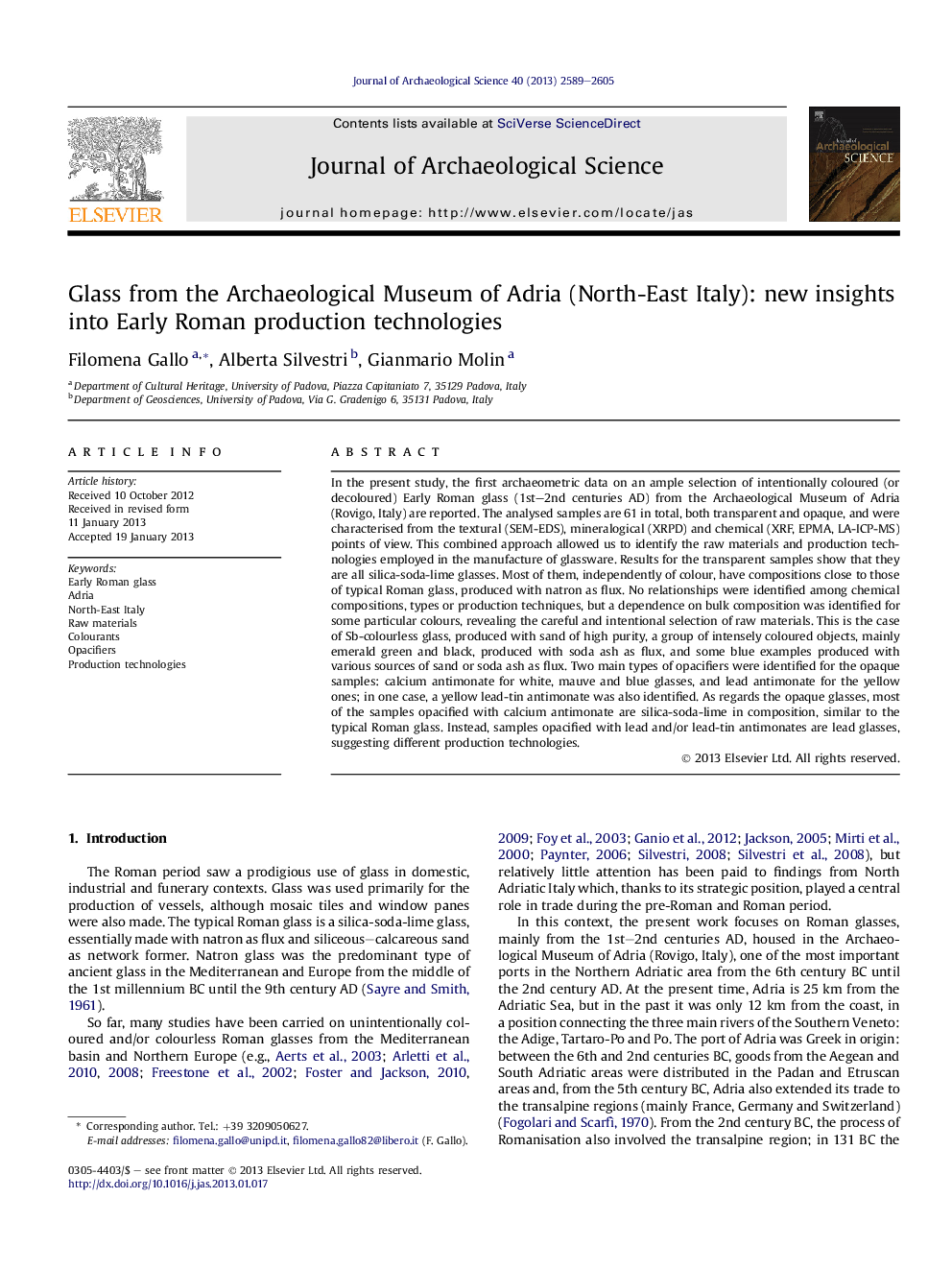| Article ID | Journal | Published Year | Pages | File Type |
|---|---|---|---|---|
| 1035462 | Journal of Archaeological Science | 2013 | 17 Pages |
In the present study, the first archaeometric data on an ample selection of intentionally coloured (or decoloured) Early Roman glass (1st–2nd centuries AD) from the Archaeological Museum of Adria (Rovigo, Italy) are reported. The analysed samples are 61 in total, both transparent and opaque, and were characterised from the textural (SEM-EDS), mineralogical (XRPD) and chemical (XRF, EPMA, LA-ICP-MS) points of view. This combined approach allowed us to identify the raw materials and production technologies employed in the manufacture of glassware. Results for the transparent samples show that they are all silica-soda-lime glasses. Most of them, independently of colour, have compositions close to those of typical Roman glass, produced with natron as flux. No relationships were identified among chemical compositions, types or production techniques, but a dependence on bulk composition was identified for some particular colours, revealing the careful and intentional selection of raw materials. This is the case of Sb-colourless glass, produced with sand of high purity, a group of intensely coloured objects, mainly emerald green and black, produced with soda ash as flux, and some blue examples produced with various sources of sand or soda ash as flux. Two main types of opacifiers were identified for the opaque samples: calcium antimonate for white, mauve and blue glasses, and lead antimonate for the yellow ones; in one case, a yellow lead-tin antimonate was also identified. As regards the opaque glasses, most of the samples opacified with calcium antimonate are silica-soda-lime in composition, similar to the typical Roman glass. Instead, samples opacified with lead and/or lead-tin antimonates are lead glasses, suggesting different production technologies.
► An archaeometric study was carried on coloured Early Roman glasses from North-East Italy. ► Raw materials and production technologies of both glass and opacifiers were identified. ► The majority of the samples shows a ‘typical’ Roman glass composition. ► Some particular colours show a dependence on the bulk composition. ► Calcium or lead antimonates are the main opacifiers identified.
